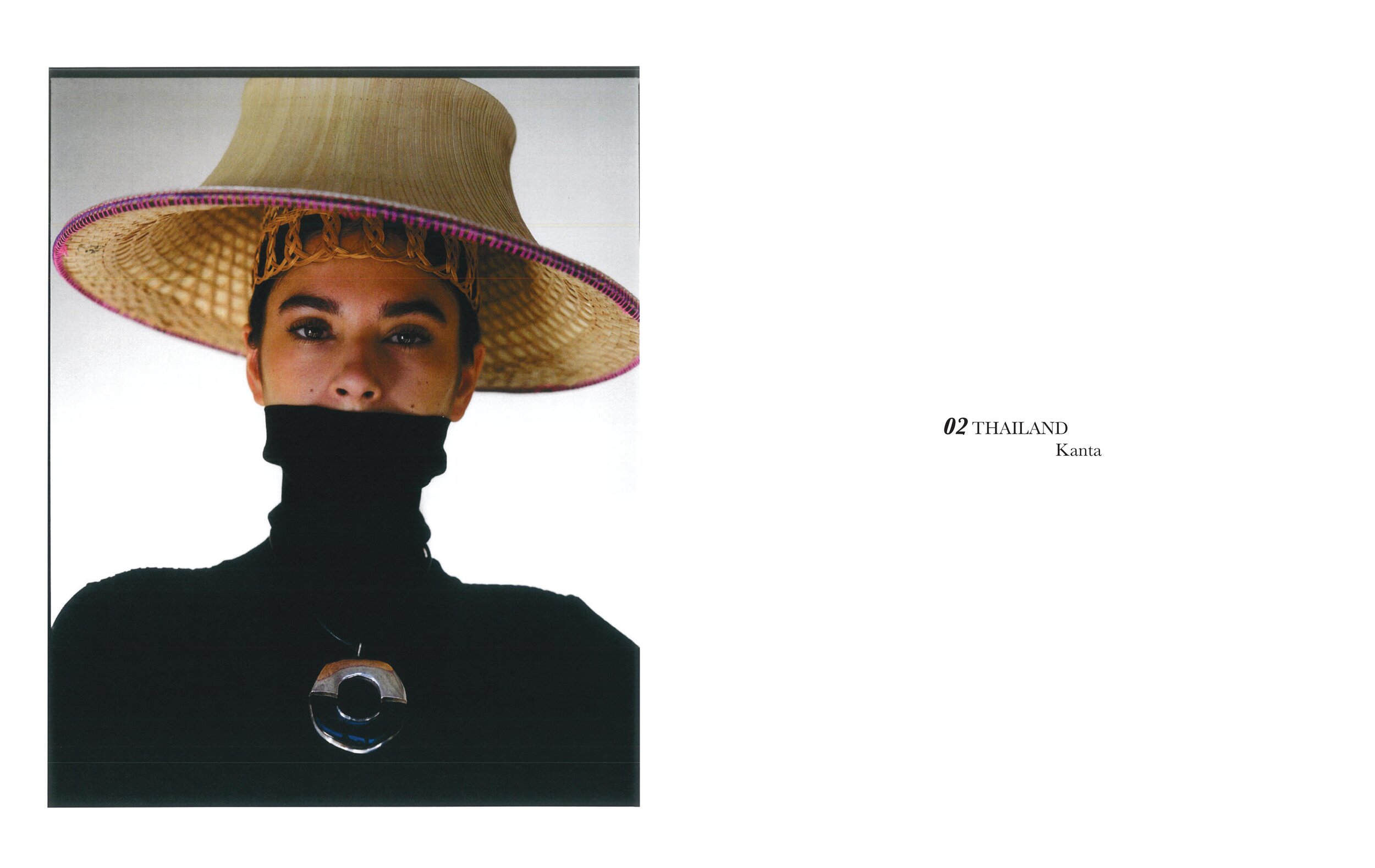Leaf Hats: A photo series exploring East & Southeast Asia's traditional headwear
Written by Lucka Ngo
When I was little I would always go visit my grandparents in Vietnam, who live in a village called Mai Đinh. Each time, I would spot these leaf hats (which in Vietnam we call “Non la”) whether I was going to the food market around the corner, seeing people working on the rice fields or just simply taking a walk to my neighbours. I would see everyone around me wearing it to protect themselves. To me, these hats play a crucial part in Vietnamese culture. They tell a life story of the people I’ve been surrounded by while growing up.
When I was coming up with this project idea, I realised that agriculture was and still is one of the most important sources of living. It’s said that more than 2.2 billion people in the region rely on agriculture for their livelihoods. Rice is by far the most important crop throughout Asia – 90% of the worlds’ production and consumption occurs in this region. I wanted to shed light on other Asian countries as well that share a similar way of living and connection with agriculture.
In this photo series, we photographed six models - each model represents the country and the traditional hat that originates from where they have come from. The six Asian countries that we were able to feature in this series were Korea (Joony Kim), Thailand (Kanta), Taiwan (MJ), Vietnam (Hop Nguyễn), Malaysia (Atikah) and China (Candice Lam).
Each country has a unique process of making these hats. Here are a few examples:
Thailand - More complex in design relative to other Asian conical hats. The ngob is made of ola palm leaves laid over a plaited bamboo-strip frame. The frame includes an inner band which fits around the wearer's head, creating space for air circulation.
Taiwan - The hat shaper, which is collected by Chen Shuhui (an elderly man in Kengzi Village, Luzhu Township, Taoyuan County) has a history of more than 180 years. The blackened and shiny wood appearance bears witness to the heritage of the Chen family. Three generations of handmade hats are produced. What is commendable is that the hat shaper is still used today, and it is a good tool for teachers and students of Dingshe Elementary School to learn how to make hats.
Vietnam - The n.n hat is made of four large leaves stitched together by bamboo sticks. As a rule, women wear a broad-rimmed version of the hat, whereas for men, the cone is higher and the rims are smaller. Different versions were made for the upper class, for children, for the army troops, for the religious monks, for different regions even, and so on. There are over 50 types in total. The material can change too, as people utilise what is around them, however one typically uses palm leaves, bark of Moc tree and bamboo to make them.
Malaysia - The sirung frame is handmade from rattan and the surface is from weaved bamboo. Most Borneo hats are in a cone shape and in the middle of the cone, the bamboos are coloured to create a pattern to make it look attractive.
The goal/purpose of this hat series is to bring to light both the happiness and struggle of an Asian woman. Most of these traditional hats were used as a protection from the sun and the rain and were often considered cheap/old, however, we want to emphasise how important and beautiful these hats actually are. From my experience, people wearing these hats were mostly seen as lower class and likely to have suffered from lack of adequate housing and food, decent clothing, safety etc, but I think what makes people strong individuals are that despite hardships, they never give up. To me, that is beautiful. To me, that is why even a simple hat could be so meaningful and powerful, because it carries so much love, sweat, pain and hard work. I want my grandma, my aunts, my cousins, my neighbours and anyone that wears these hats to be appreciated.
Credits:
Photographer: Lucka Ngô
Stylist: Ashly Tsao
Hair: Yu Nakata
Make Up: Miki Ishikura
Talent
1. JOONY KIM @THE INDUSTRY – KOREA. Dress – Stella McCartney
2. KANTA @APM – THAILAND. Top – Celine
3. MJ @WILHELMINA– TAIWAN. Top – Celine. Earrings – The Jewelry Library
4. HOP NGUYEN @OFFSHORE – VIETNAM. Top – Cushnie
5. ATIKAH @ONE– MALAYSIA. Top – Alix
6. CANDICE LAM @WILHELMINA– CHINA. Top – Celine. Earrings – The Jewelry Library






